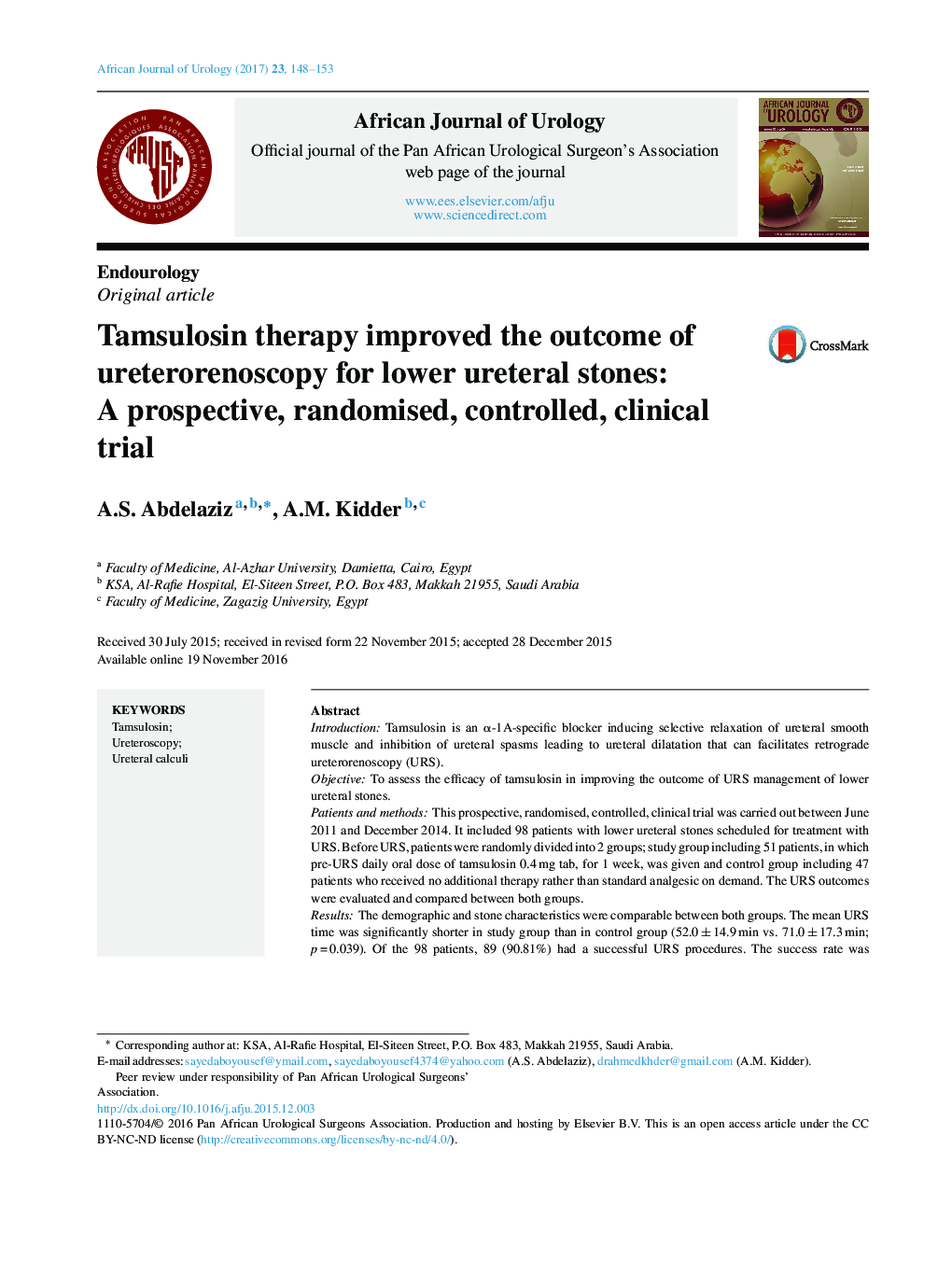| Article ID | Journal | Published Year | Pages | File Type |
|---|---|---|---|---|
| 5729513 | African Journal of Urology | 2017 | 6 Pages |
IntroductionTamsulosin is an α-1A-specific blocker inducing selective relaxation of ureteral smooth muscle and inhibition of ureteral spasms leading to ureteral dilatation that can facilitates retrograde ureterorenoscopy (URS).ObjectiveTo assess the efficacy of tamsulosin in improving the outcome of URS management of lower ureteral stones.Patients and methodsThis prospective, randomised, controlled, clinical trial was carried out between June 2011 and December 2014. It included 98 patients with lower ureteral stones scheduled for treatment with URS. Before URS, patients were randomly divided into 2 groups; study group including 51 patients, in which pre-URS daily oral dose of tamsulosin 0.4 mg tab, for 1 week, was given and control group including 47 patients who received no additional therapy rather than standard analgesic on demand. The URS outcomes were evaluated and compared between both groups.ResultsThe demographic and stone characteristics were comparable between both groups. The mean URS time was significantly shorter in study group than in control group (52.0 ± 14.9 min vs. 71.0 ± 17.3 min; p = 0.039). Of the 98 patients, 89 (90.81%) had a successful URS procedures. The success rate was 94.1% (98/51) in study group compared 89.2% (58/65) in the control group, with statistically significant difference (p = 0.045). The major complications occurred in 4.25% of patients in control group but in only 1.96% of those received tamsulosin (p = 0.034).ConclusionPost-tamsulosin ureteroscopy was easier and safer; leading to significantly increased stone-free rates and fewer complications.
